The Willamette Meteorite is one of the largest meteorites ever found in the United States and is classified as an iron meteorite. It is famous not only for its size but also for the controversy surrounding its discovery and ownership. The meteorite has been a subject of scientific study and public fascination for many years.
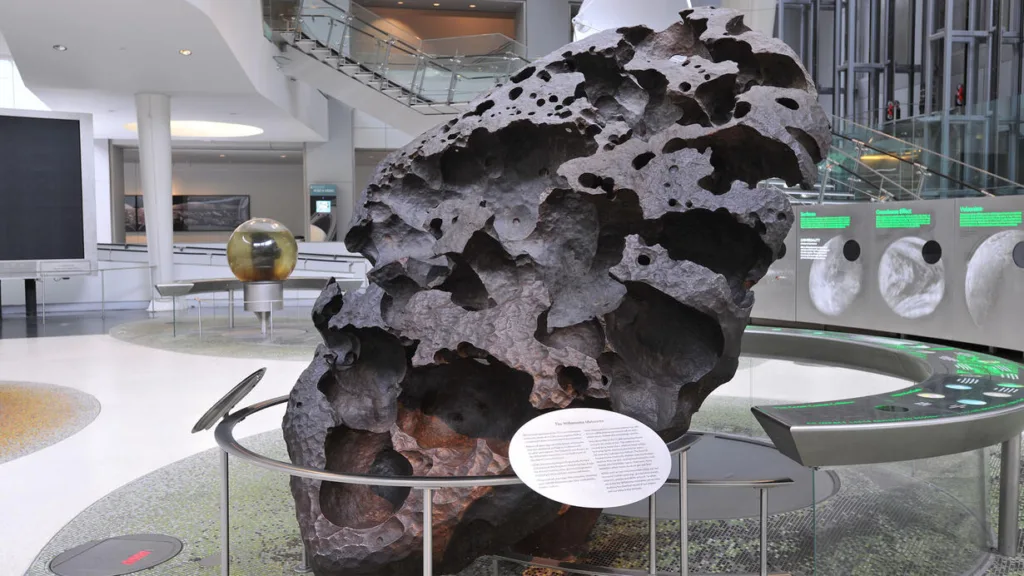
Location: The Willamette Meteorite was discovered in what is now the state of Oregon, USA. Specifically, it was found in the West Linn area, which is near the Willamette River. This location gives the meteorite its name.
Discovery: The exact date of the Willamette Meteorite’s discovery is uncertain, as Native American tribes in the area may have known about it for centuries before European settlers arrived. However, it gained wider attention in 1902 when it was discovered by a settler named Ellis Hughes on land owned by the Oregon Iron and Steel Company.
The meteorite’s discovery sparked a legal dispute over ownership, as the Oregon Iron and Steel Company claimed the land where the meteorite was found. This led to a court case that lasted several years, with the meteorite at the center of the controversy.
Today, the Willamette Meteorite is housed in the American Museum of Natural History in New York City, where it continues to be a popular attraction for visitors interested in meteorites and space science. It is estimated to be around 13,000 years old and is composed mainly of iron and nickel. The meteorite weighs over 15.5 tons, making it one of the largest meteorites ever found on Earth.
Description of the Willamette Meteorite
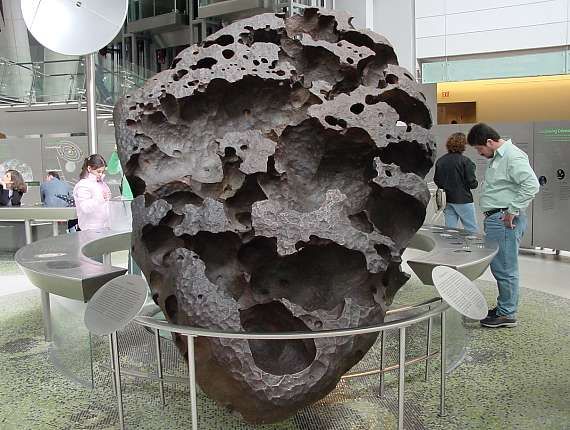
The Willamette Meteorite is a remarkable and iconic meteorite known for its size, composition, and historical significance. Here’s a detailed description of the Willamette Meteorite:
1. Size and Weight: The Willamette Meteorite is one of the largest meteorites ever discovered on Earth. It measures approximately 10.5 feet (3.2 meters) in length, 6.5 feet (2 meters) in width, and 4.25 feet (1.3 meters) in height. Its immense size sets it apart from most other meteorites. The meteorite’s weight is estimated to be over 15.5 tons (14 metric tonnes), making it exceptionally heavy.
2. Composition: The Willamette Meteorite is primarily composed of iron-nickel alloy, which is a common characteristic of iron meteorites. The meteorite consists of approximately 91% iron, 7.62% nickel, and small traces of other elements and minerals, including cobalt and phosphorus. The distinctive Widmanstätten patterns, which are intricate, intersecting crystalline structures, can be observed on its cut surface.
3. Appearance: The meteorite has a distinctive appearance, with a dark, weathered exterior that shows signs of rust and corrosion, giving it a reddish-brown or deep brown color. This outer layer, known as a fusion crust, formed as the meteorite heated up and partially melted during its entry through Earth’s atmosphere. The fusion crust helps protect the meteorite from further weathering.
4. Regmaglypts: One of the notable features of the Willamette Meteorite is the presence of regmaglypts or thumbprint-like depressions on its surface. These regmaglypts were formed during the meteorite’s fiery descent through the atmosphere. They are caused by ablation, where the outer surface melts and evaporates due to friction and heat, leaving behind these distinctive impressions.
5. Origin: The precise origin of the Willamette Meteorite is not known, as it likely comes from the asteroid belt between Mars and Jupiter. It is believed to have traveled through space for millions of years before entering Earth’s atmosphere and landing in what is now Oregon.
6. Cultural and Historical Significance: Beyond its scientific importance, the Willamette Meteorite also holds cultural significance. Native American tribes in the region regarded it with reverence long before its formal discovery by European settlers. The meteorite’s ownership and legal disputes in the early 20th century added to its notoriety and historical context.
Today, the Willamette Meteorite is displayed at the American Museum of Natural History in New York City, where it continues to capture the imagination of visitors and researchers interested in meteorites and the mysteries of the cosmos.
Scientific Significance
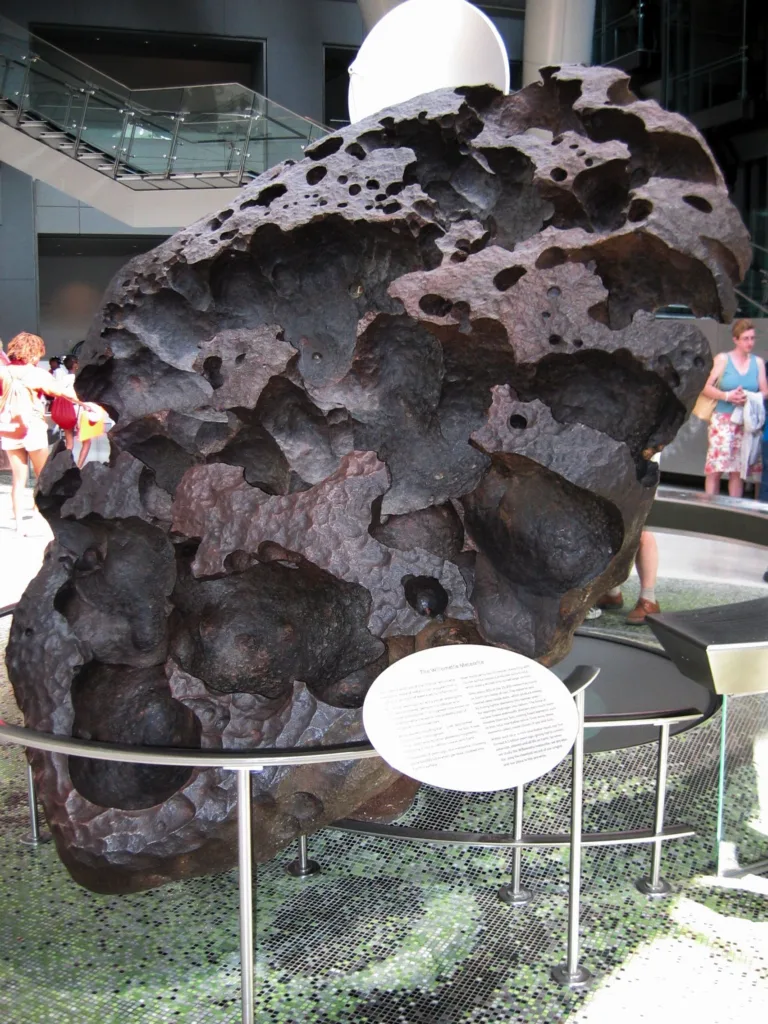
The Willamette Meteorite holds significant scientific importance for several reasons:
- Composition and Classification: As an iron meteorite, the Willamette Meteorite provides valuable insights into the composition of meteorites. Its high iron and nickel content, along with other trace elements, allows scientists to study the materials that make up these extraterrestrial objects. By analyzing its composition, researchers can better understand the processes that formed both the meteorite and the early solar system.
- Age Determination: Radiometric dating techniques have been used to estimate the age of the Willamette Meteorite, which is approximately 13,000 years old. This dating provides a reference point for understanding the timing of meteorite impacts on Earth and helps in studying the history of celestial bodies in our solar system.
- Meteoroid Disintegration: The meteorite’s regmaglypts (thumbprint-like depressions) and fusion crust provide insights into how meteoroids disintegrate and ablate during their entry through Earth’s atmosphere. Understanding the processes that occur during atmospheric entry is crucial for studying meteorites and the potential hazards posed by larger asteroid impacts.
- Planetary Formation and Differentiation: Iron meteorites like the Willamette Meteorite are thought to originate from the cores of small planetary bodies that differentiated early in the history of the solar system. By studying iron meteorites, scientists can gain insights into the processes of planetary formation, differentiation, and the thermal history of these celestial bodies.
- Impact and Geological Effects: The discovery of the Willamette Meteorite and its subsequent impact crater evidence has contributed to our understanding of meteorite impacts on Earth’s surface. It helps scientists study the geological and environmental effects of such impacts, shedding light on the Earth’s history and the potential risks associated with asteroid impacts in the future.
- Public Engagement and Education: The Willamette Meteorite serves as an educational tool and a source of inspiration for the public. Its display in museums allows visitors to learn about meteorites, space science, and the history of our solar system. It encourages interest in astronomy and planetary science.
Overall, the Willamette Meteorite is a valuable specimen for scientific research, contributing to our understanding of meteorites, planetary formation, and the Earth’s interaction with celestial objects. Its significance extends beyond the realm of academia, as it continues to captivate the imaginations of people interested in space and the mysteries of the universe.
Acquisition and Ownership History
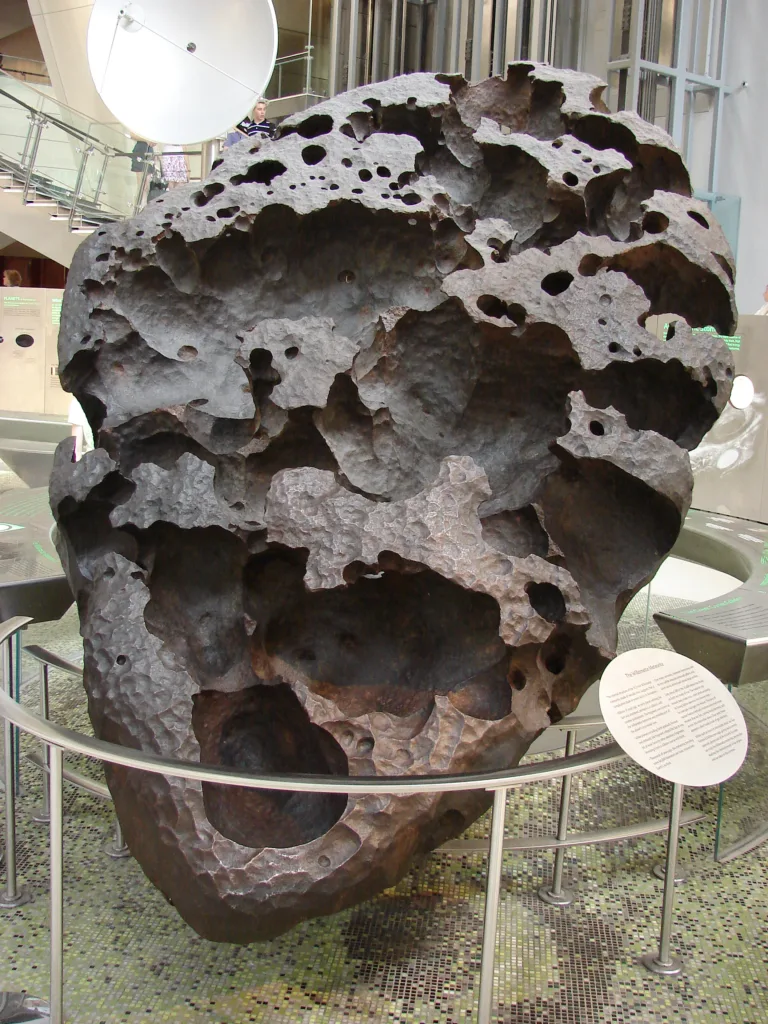
The acquisition and ownership history of the Willamette Meteorite is a complex and controversial story that spans several decades. Here is an overview of the key events in its acquisition and ownership:
- Native American and Pre-European History: Before European settlers arrived in the region, the Willamette Meteorite was known and revered by Native American tribes in the area. It held spiritual and cultural significance for these indigenous peoples.
- Discovery: The meteorite gained wider attention in the early 20th century when it was discovered by a settler named Ellis Hughes in 1902 on land owned by the Oregon Iron and Steel Company. The meteorite had likely been resting in the same location for centuries.
- Legal Dispute: The discovery of the Willamette Meteorite led to a legal dispute over ownership. The Oregon Iron and Steel Company claimed ownership of the land on which the meteorite was found, and they subsequently asserted ownership of the meteorite itself. This dispute resulted in a court case that lasted for several years.
- Ownership Determination: In 1905, a judge ruled that the meteorite belonged to the Oregon Iron and Steel Company, largely based on their ownership of the land where it was found. This decision was met with controversy and public outcry, as many believed the meteorite should be considered a natural treasure and not private property.
- Sale to the American Museum of Natural History: In 1906, the Oregon Iron and Steel Company decided to sell the Willamette Meteorite. It was purchased by the American Museum of Natural History (AMNH) in New York City for $20,600, a significant sum at the time. The acquisition of the meteorite by a museum sparked further debate and criticism.
- Public Display: The Willamette Meteorite has been on public display at the American Museum of Natural History ever since its acquisition. It remains a popular exhibit, attracting visitors interested in meteorites and space science.
- Ongoing Controversy: The ownership and acquisition of the Willamette Meteorite have remained controversial topics throughout its history. Some individuals and organizations have called for its return to Oregon, citing its cultural significance to Native American communities. However, legal ownership of the meteorite was determined through the court case in 1905, and it remains in the possession of the American Museum of Natural History.
The Willamette Meteorite’s ownership history highlights the complex and sometimes contentious issues surrounding the ownership and stewardship of meteorites and other natural objects of scientific and cultural significance. While it remains on display in New York, discussions about its rightful place and significance continue to this day.
Display and Accessibility
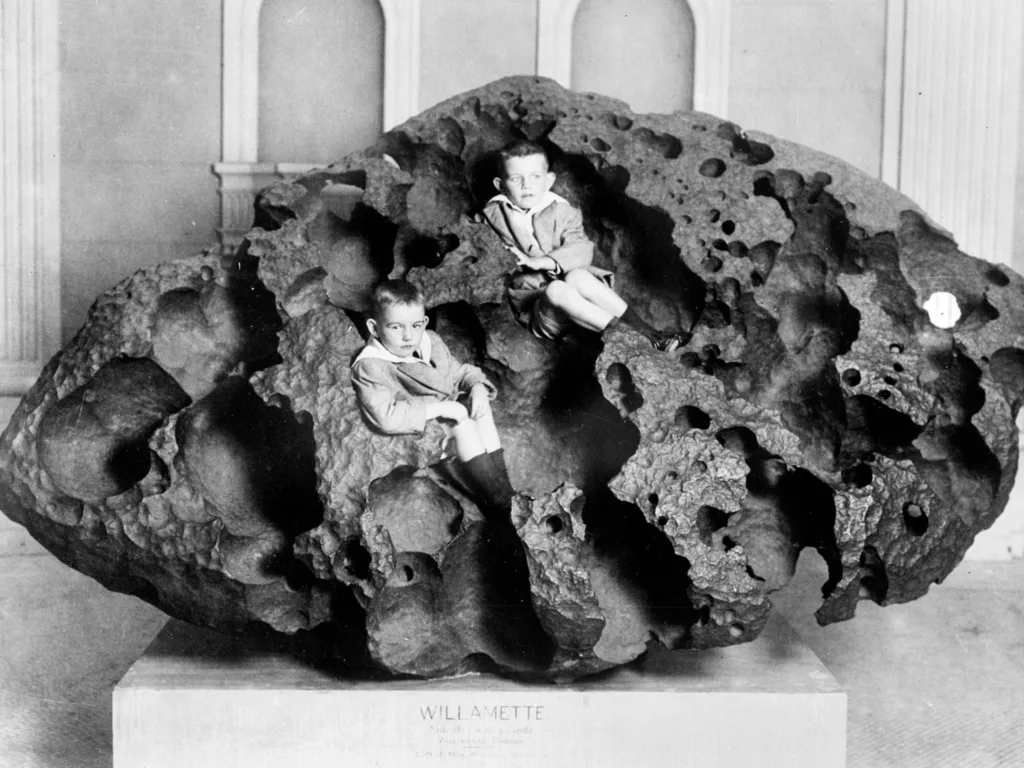
The Willamette Meteorite is currently on public display at the American Museum of Natural History (AMNH) in New York City, where it has been showcased for over a century. Here’s some information about its display and accessibility:
Display: The Willamette Meteorite is prominently displayed in the museum’s Rose Center for Earth and Space, a section of the AMNH dedicated to the study of astronomy, astrophysics, and meteorites. Within the Rose Center, the meteorite is housed in a specially designed glass case that allows visitors to view it from various angles. The meteorite is positioned so that its impressive size and distinctive features, including its fusion crust and regmaglypts, can be easily observed.
Accessibility: The American Museum of Natural History is one of the most well-known and visited museums in the United States, and it is easily accessible to the public. Here’s how you can visit and access the Willamette Meteorite:
- Location: The AMNH is located at Central Park West and 79th Street in Manhattan, New York City. It’s a well-known landmark and easily accessible by various modes of transportation.
- Admission: Access to the museum, including the exhibit where the Willamette Meteorite is displayed, requires purchasing a ticket. Admission fees may vary, and discounts are often available for students, seniors, and children.
- Visiting Hours: The museum’s hours of operation can vary, so it’s a good idea to check the official AMNH website or contact the museum directly for up-to-date information on visiting hours, especially if you’re planning a trip.
- Accessibility Services: The museum is committed to providing accessibility services for visitors with disabilities. These services may include wheelchair accessibility, assistive listening devices, sign language interpreters, and more. Visitors with specific accessibility needs should contact the museum in advance to make arrangements.
- Guided Tours: The AMNH offers guided tours and educational programs, which can enhance your visit and provide more in-depth information about the meteorite and other exhibits.
- Educational Resources: The museum often provides educational materials and resources related to its exhibits, including the Willamette Meteorite, which can be helpful for visitors looking to learn more about this unique meteorite and its scientific significance.
Remember that museum operating hours, admission fees, and accessibility services may change, so it’s advisable to check the official AMNH website or contact the museum directly for the most current information before planning your visit to see the Willamette Meteorite.
Summary of the Willamette Meteorite’s significance
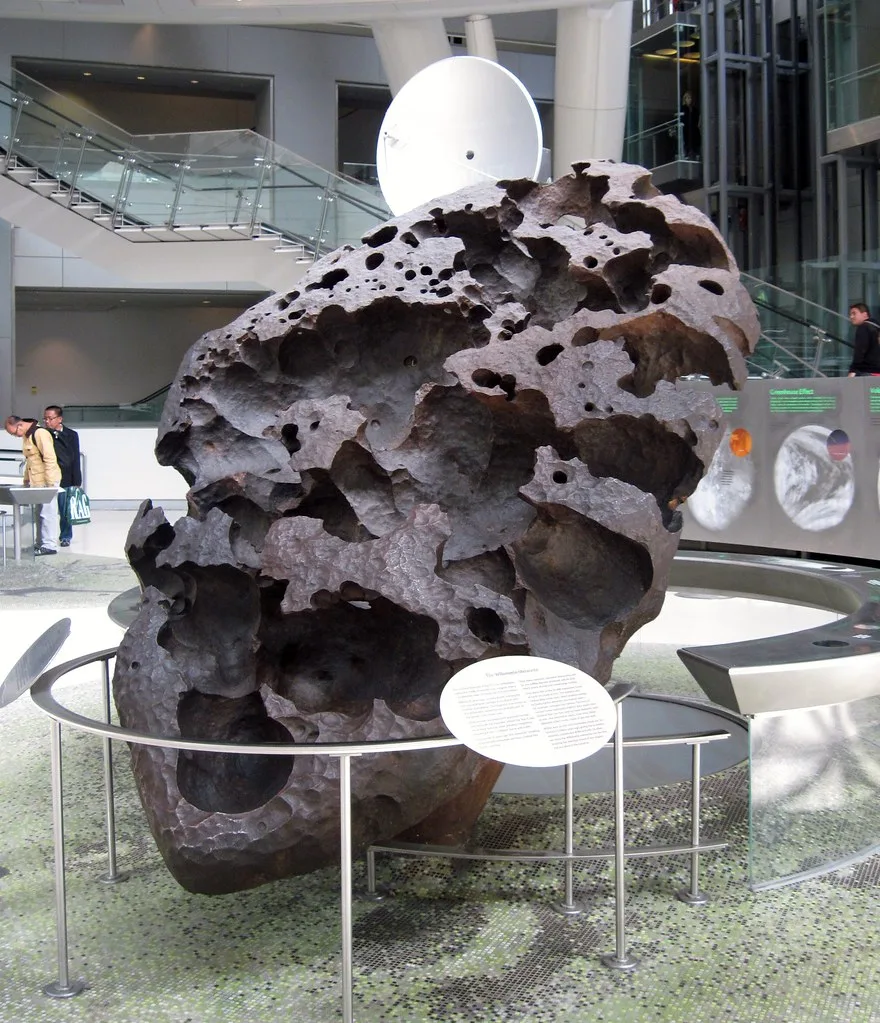
- Size: It ranks among the largest meteorites ever discovered on Earth, weighing over 15.5 tons and measuring more than 10 feet in length. Its immense size makes it a remarkable object for study.
- Composition: Composed mainly of iron and nickel, the Willamette Meteorite provides valuable insights into the materials that make up meteorites and the processes that shaped these celestial bodies.
- Scientific Insights: Researchers have used the meteorite to study the age of meteorites, planetary formation, and differentiation processes, helping to unravel the history of our solar system.
- Atmospheric Entry: The meteorite’s fusion crust and regmaglypts offer crucial information about the processes that occur when meteoroids enter Earth’s atmosphere, contributing to our understanding of meteorite impacts.
- Cultural and Historical Significance: The meteorite was revered by Native American tribes long before its formal discovery. Its acquisition and ownership history have generated debate and controversy, highlighting issues of cultural heritage and stewardship.
- Public Engagement: On display at the American Museum of Natural History in New York City, the meteorite serves as an educational tool, inspiring interest in astronomy, space science, and the mysteries of the universe among the public.
Overall, the Willamette Meteorite’s scientific, cultural, and historical importance, combined with its unique characteristics, make it a captivating and significant object of study and public fascination.




































